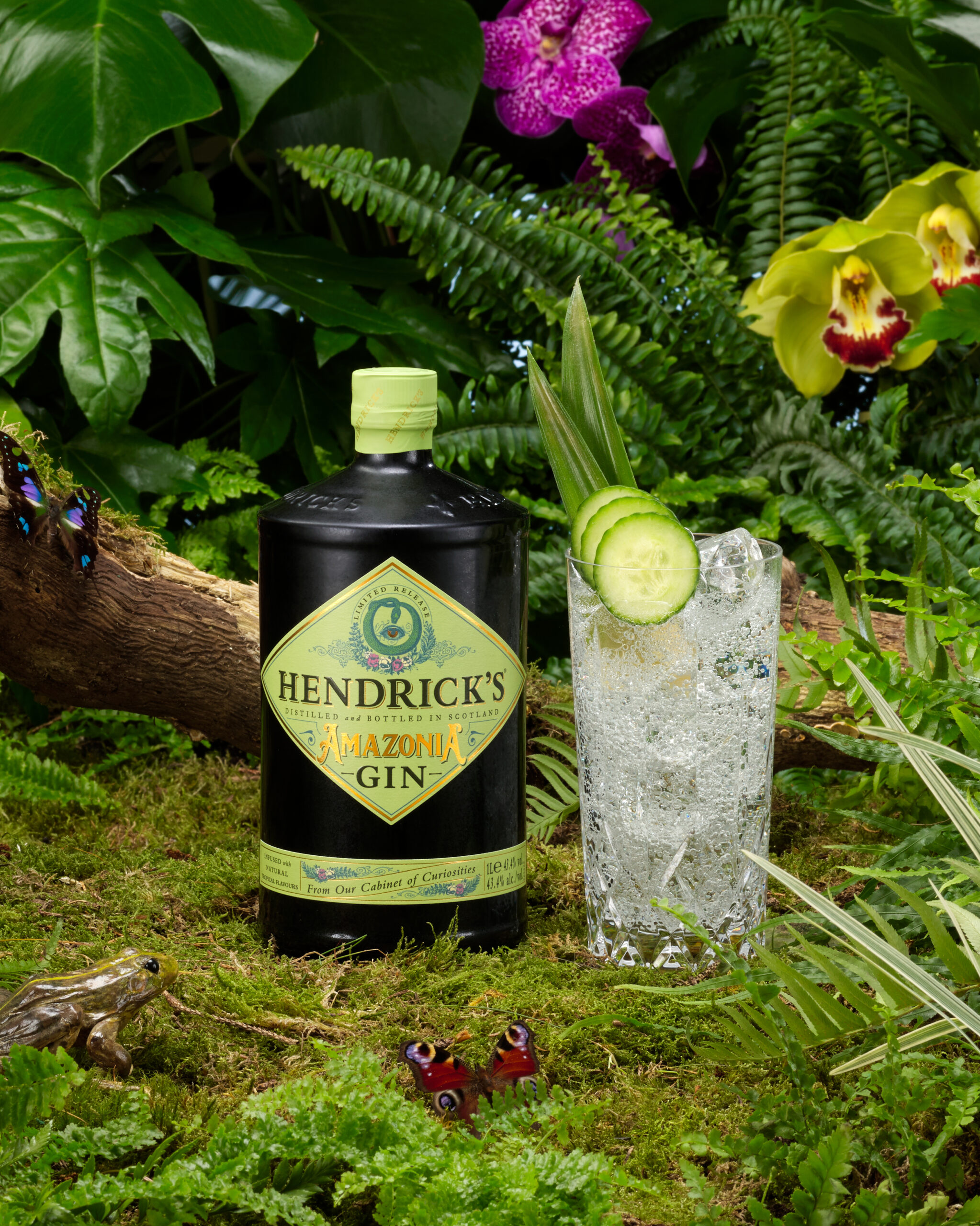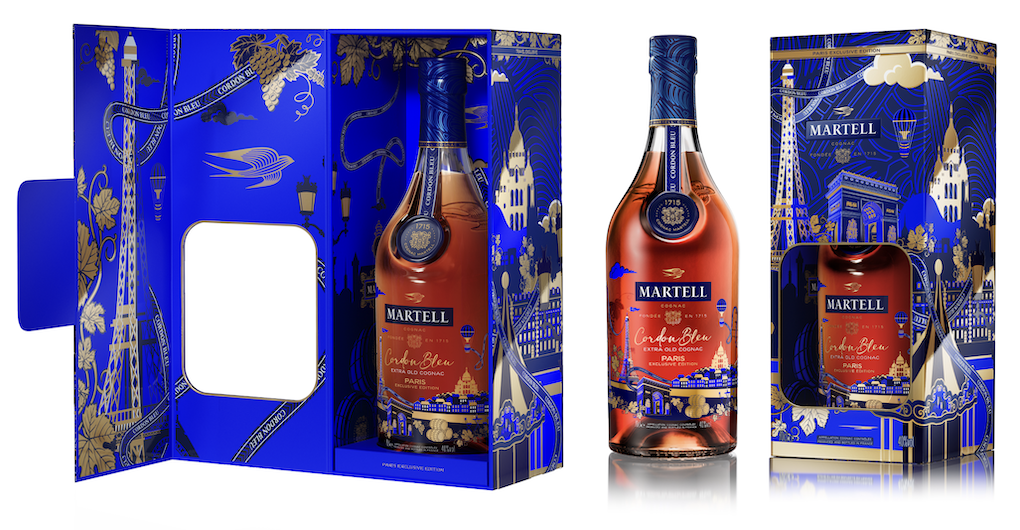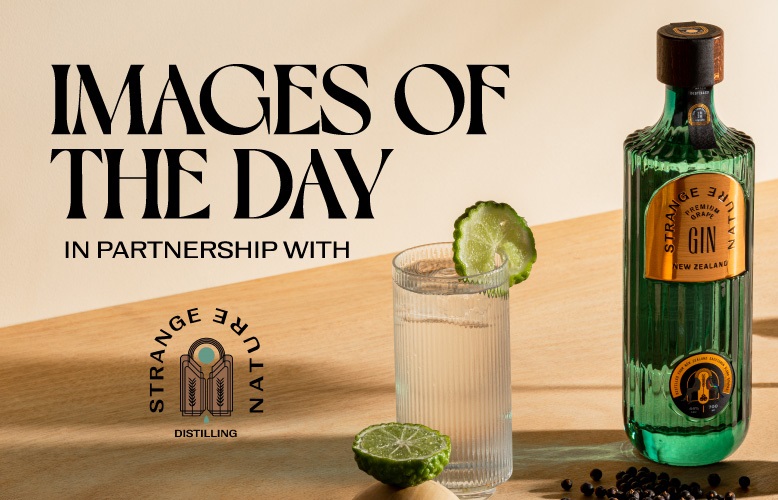As part of the dramatic rainforest-themed remodelling of The Moodie Davitt Report website homepage for the release of the travel retail-exclusive Hendrick’s Amazonia, Hendrick’s Master Distiller Lesley Gracie discusses her thinking behind the new expression, the art of distilling and what she looks out for in the airport.
You drew your inspiration for Hendrick’s Amazonia from a three-week stay with a tribe in Venezuela’s Amazonian rainforest back in 2013 with Charles Brewer-Carías, and Francisco Delascio. How inspirational were they and the whole Amazonian experience?
Charles is such an amazing guy, so to be able to speak to him and visit the rainforest with him and Francisco was just amazing. Charles knows the area and Francisco knows all of the plants.
How much did you know about the flora and fauna of the Amazon going into the trip?
Before we went, we really had no idea what we would find. We wanted something we could potentially put into Hendrick’s that would highlight its flavours rather than dominate them.
We had full latitude to do whatever we wanted. Francisco was so useful because he was both able to tell us which plants were poisonous, and give us his understanding of the flavours of the plants.

Which new discoveries from the rainforest stand out?
Scorpion’s tail is a plant given its name by the Indians because the flower calyx curls over, like a scorpion’s tail. The Indians themselves use it as a remedy for stomach problems.
The first thing you can do with plants is pull the leaves off, rub them in your hands and smell them. That particular plant had the spice, floral and green elements that we have in Hendrick’s, so that made for a great complement to the liquid. When I did an extract of it, those three elements were still there, which is quite unusual; then when I did the distillation, those three elements were still there. For us, that was an amazing find.
At what point could you tell that the Amazonian concept would work with Hendrick’s? Was it at the moment of sight, smell or taste?
You get your initial idea from the aroma, then when you rub it in your hands you get a good inclination of what it will be like. But it’s not until you get the extract and then the distillate that you realise what you will get from the plant. You find out different things at each stage.
Without actually using Amazonian ingredients then, how did you translate the aromas and sensorial experience of the Amazon into the new liquid?
The sense of smell is so evocative. You can smell something and it will immediately transport you to a place or time. The smell of the rainforest is what I wanted to get into Hendrick’s Amazonia, so it needed the bright floral and fruit elements.
When you smell Hendrick’s Amazonia, does it take you back to one specific moment from your time in the Amazon?
It smells to me like the first day when we walked into the jungle.

[image_magnify src=”https://www.moodiedavittreport.com/wp-content/uploads/2020/02/Hendricks_800.jpg” src_big=”https://www.moodiedavittreport.com/wp-content/uploads/2020/02/Hendricks_1600.jpg” alt=”” /]
Hendrick’s has been a truly pioneering gin in its flavour profile, marketing and production. Looking at the latter, tell us how you hit upon the production method.
We have a different production method that uses two types of still. The reason we use two types of still is because [former William Grant & Sons President & Chairman] Charles Gordon bought two stills in London in 1966: a Bennett still and a Carter-Head still.
When he decided he wanted a new gin to be made in 1999, it was quite a surprise to us because the gin world wasn’t really doing anything: people weren’t drinking it and there were typically only three or four brands behind the bar.
Nonetheless, he said he wanted both of the stills to be used, so that is where we started from. The elements that you get from the two distillations are totally different, despite using the same 11 botanicals in both. That is where we started from and then taking the best elements from both distillations really worked to give us a totally different base.
Did you suspect, when trying to marry those two stills together for the first time, that it would work so well?
To start off, it was a case of just seeing what happens because it was not something we had tried before. We then looked at the distillate we had and started to play with the two distillates together.
With flavour creation, how do you find the starting point and get to the finished product?
If I find a new botanical or flavour, it is understanding what that is like on its own and then how to start to add it into other ingredients. We can find some different fruits and then you look at the distillate and how that will work with juniper and the botanicals. You then start to build in different elements. There is the Hendrick’s house style, for example, therefore what we produce has to fit in with that.

How do you personally enjoy your Hendrick’s?
For me, I have the original Hendrick’s with elderflower cordial, soda water and a garnish of cucumber over ice.
Who and what have been the creative inspirations of your life?
From a liquor perspective, it would have to be Charlie Gordon. He was an amazing guy, who really had the enthusiasm to try everything.
The great passion I have for flowers and plants probably comes from my parents. I used to get strange flowers, mix them in water and say to my mum that I had made her some perfume. My mum was a bit of a rascal, she would always come away with cuttings in her handbags when going to someone’s garden, and I now find myself doing the same thing.
How do you feel when you see Hendrick’s in airports around the world often surrounded by fantastic and innovative promotions?
It’s almost surreal and a proud moment when you see the liquids on the shelf and people putting them in their basket.
Beyond Hendrick’s, is there anything that you look out for in airport shops?
I am always interested in local spirits at foreign airports and what people make in that particular country. That often comes back to the local plants, so I always find that really fascinating.






